Editor of this issue: Antanas Klimas, University of Rochester
Copyright © 1992 LITUANUS Foundation, Inc.

|
LITUANUS
LITHUANIAN QUARTERLY JOURNAL OF ARTS AND SCIENCES
Volume 38,
No.3 - Fall 1992
Editor of this issue: Antanas Klimas, University of Rochester ISSN 0024-5089
Copyright © 1992 LITUANUS Foundation, Inc. |

|
ONA DOKALSKAITĖ: A ROMANTICIST*
DANAS LAPKUS
The cultural influences of three countries nurtured the inborn talent of Ona Dokalskaitė. Lithuania presented her with a deep personal spirituality and the means for validating eternal values; in Byelorussia she obtained professional schooling in the arts and learned the discipline demanded of an artist; and America granted her the courage of free expression. Ona Dokalskaitė acquired these lessons through painful personal experiences. Perhaps that is why her art is so stable, so unspoiled by short-lived fads, but instead constantly enriched by delicate nuances of the artist's endless quest.
The artist remembers creating her first landscapes prompted by youthful yearning. This longing, this secret discontent, I believe, was and still remains, the artist's driving force for touching brush to canvas, whereby she expresses for herself and for others the craving for childhood experiences, the desire for difficult-to-attain tranquility and stability, for beauty, goodness, and the yearning for love. The eyes of the subjects of her portraits and the color schemes of her landscapes speak eloquently of these longings.
Ona Dokalskaitė's artistic style survived like a supple new growth upon the trunk of Socialist Realism. Immediately one notices the relationship of the compositions of her portraits and the arrangements of the still lifes with the works of the famous artists of early 20th century Moscow and Saint Petersburg. She was able to experience the indirect influence of these masters through the teachers of the Vitebsk Art Technicum. The romanticism so dear to the artist's heart intertwined beautifully with traditional realism. This effect can be found in the works of Mihail Brubel, Valentin Serov, and Aleksandra Benua, who perhaps inspired the artist to seek mysticism in everyday life, to infuse with a sense of the mysterious her landscapes and some of the portraits.
If the stylistic language of Ona Dokalskaitė is based on both realism and romanticism, then her method of painting relies on the synthesis, and sometimes even the conflict, between graphic lines and colors. In every painting the artist seems to be trying to resolve this challenge. Characteristic lines and contours are prevalent in Ona Dokalskaitė's portraits. The transparently spread color on the canvas gives only a hint of the depicted figure, yet communicates to the viewer a specific mood. The colors are coordinated so subtly as to produce an effect somewhat akin to a musical chord, which is undisturbed by even the boldest, darkest contours.
Dominating the characterizations of her models is the concept of a kind of "lyric hero" or "heroine." In The Street (1991), At the Exhibition (1973), and In the Bar (1985), the artist places women into various situations and surroundings in order to observe how they conduct themselves. Sometimes the artist chooses as her focal point some detail of apparel, such as The Yellowish Dress (1975) or The Bonet (1991). The character traits are always concentrated in the oval of the face. The emotional impact, as well as the material textures, fade gradually, retreating toward the edges of the painting, away from the inscrutable eyes of the subject. With quick, masterly brush strokes, the artist captures only that which is most important in the present moment without burdening the central theme with that which is merely decorative. For this reason, her canvases are not just illusionary copies of reality.
The central compositions of the portraits direct the viewer's gaze toward a single point. In contrast, the artist's landscapes are constructed using different principles. Here depth is emphasized. While constructing the foreground in greater detail, she beckons the viewer to possibly still more attractive, misty distances. Using a thicker layer of paint, brush strokes raised in relief, and darker color schemes, the artist seems to create a framework for the interplay of shadows and reflections. The result is greenish silvery tones that shine gloriously and even ochres that attain a cold mysterious glimmer.
As one immerses oneself in Ona Dokalskaitė's works, it becomes clear that there are no dogmatic rules or recipes that she follows. The artist is open to her own and her colleagues' experiences, and constantly searches for ever clearer artistic expression. This woman is dedicated to her art, to which she owes so much. Painting brought the dearest people into her life; saved her from hunger and misery during the war years; earned her bread upon arrival in the unfamiliar, new land of America; and finally, gave her the gift of true creative rebirth at the beginning of her seventh decade. Now Ona Dokalskaitė is able to give something back to the realm of art. Surely, given her positive outlook on life, the freshness and grace of her sketching, her coloration, Ona Dokalskaitė's works are unique in the history of Lithuanian art.
*Excerpt from a forthcoming (Fall 1992) monograph Ona Dokalskaitė, the Art of Ona Dokalskaitė-Paškevičienė, 75 color plates, published by Galerija, 4317 S. Wisconsin Ave., Stickney, IL 60402.
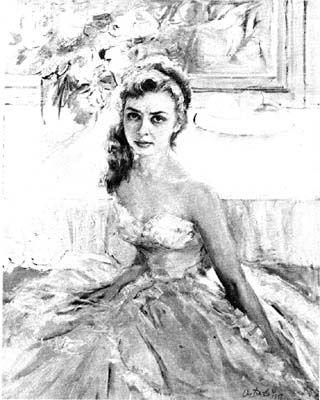
Portrait of Sister's Daughter Birutė, 1956, oil on canvas, 38"x30" (owner: R. and B. Zuyovich, California).
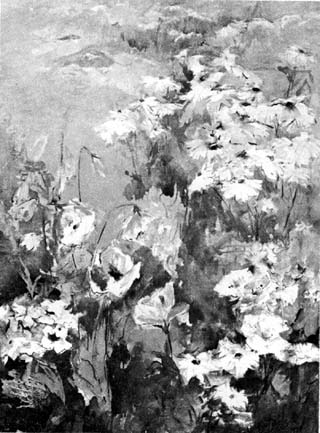
"Meadow Flowers," 1988, oil on canvas, 48"x36"
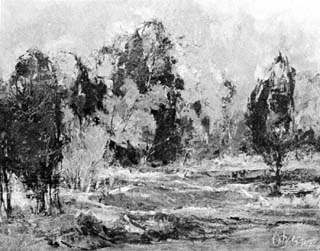
"After the Storm," 1972, oil on canvas, 24"x30"
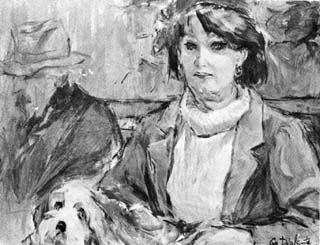
"In the Park," 1987, oil on canvas, 24"x30"
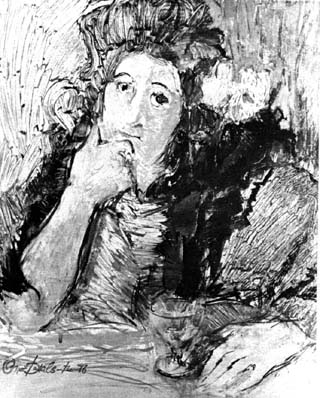
"Study," 1976, mixed media on plastic, 22"xl8"
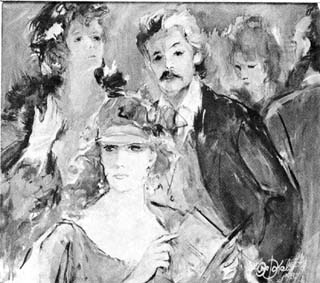
"Intermission," 1987, oil on canvas, 40"x36"
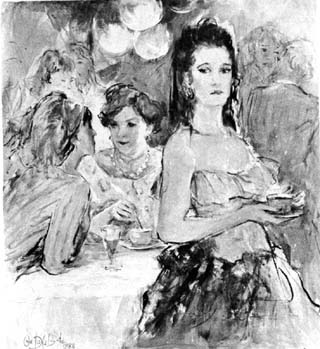
"Coffee Break," 1988, oil on canvas, 40"x36"
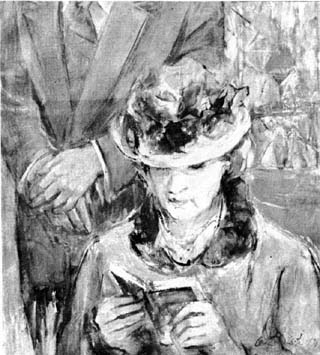
"Prayer," 1976, oil on canvas, 30"x26"
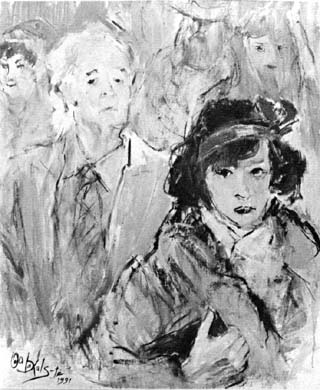
"Street No. 2," 1991, oil on canvas, 26"x22"
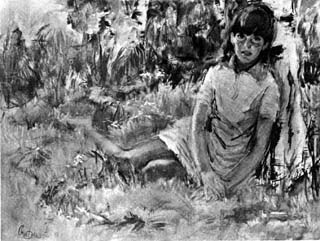
"Girl under the Birch Tree," 1971, oil on canvas, 30"x40"
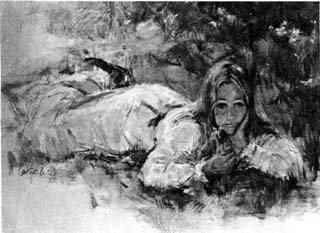
"Dyana Veil," 1973, oil on canvas, 30"x40"
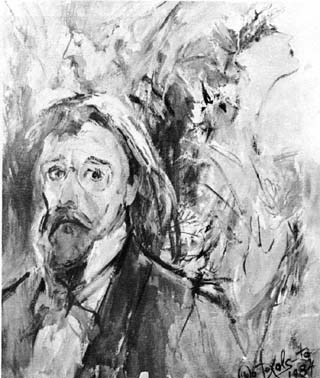
"Drama," 1984, oil on panel, 24"x20"
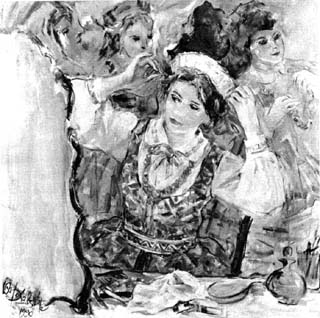
"Backstage," 1990, oil on canvas, 36"x36"